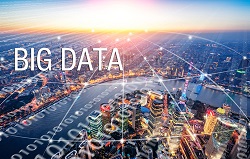The implications of big data in social justice issues are vast and concerning. With everything from privacy violations to prevention possible when it comes to handling protests, free speech rights are a valid consideration in the management of big data.
The recent landscape of world-wide protests following civil rights concerns has led to questions about big data use. We’ve seen big data used to predict and identify protests and protestors through facial recognition and other analytics tools. However, big data is also helping to spot fake news.
The implications of so much data being gathered and used with and without user consent are especially poignant in the world of advocacy and protest. Here, we’ll explore these implications and what they mean for the modern world.
Big Data and Protests
With two-thirds of American adults now on social media, the ability for data to both be tracked and spread through these mobile platforms is prevalent. Social discourse happens online. This information is then transported back to companies to use and examine as they will.
The extent of this use may surprise you. Despite what you may think, there may be much about your collected social media data you don’t know. For example, Facebook Pixel collects data across third-party sites through cookie agreements and other General Data Protection Regulation (GDPR) required notifications.
The power of this collected data has been clear in the protests of recent history. In 2011, the event known as the Arab Spring revolved around the use of social media to organize protests and form a revolution. Left behind on Twitter was a network of messages and posts that aligned with protest events. Researchers Kubinec and Wu were able to study that data to create statistical models on protests.
So what does that have to do with current events?
This means modeling and understanding protests with big data is now possible. So too is modeling and understanding the issues that create protests and social unrest. This information can even be weaponized as disinformation in the form of fake news that spreads falsities about a group or event, perhaps to incite violence or demean a cause.
Disinformation like this was recently used when a fraudulent post was made on an Idaho Facebook page stating that “a dozen males” clad in black were on their way to Boise to start riots. As a result, counter-protesters to a BLM rally showed up in force.
Because the state of social media and smartphones gives many organizations a window into an individual’s preferences, likes, and fears information or disinformation can be spread to target groups for the biggest impact. This can help motivate protesters about a social justice issue or be used to spread fear and falsehood. Either way, big data has the potential to influence, shape, and predict protests.
Alternatively, however, big data can also be used to combat fake news. Social media and tech companies are developing algorithms that can better spot disinformation where it occurs and flag the events for user discretion. However, the use of algorithms for police information has implications for censorship and free speech.
The Implications
The implications of this potential for any democracy are great. In the wrong hands, data manipulation and application can cause chaos and even infringe upon privacy rights. Big data visualization through social media platforms is an excellent means of communication and organization, but what happens when data is used to suppress protests or spread fake news that devalues the nature of their message?
Targeted groups and individuals can be selected by their data in order to prevent a protest or arrest certain leading demonstrators. Similarly, counter groups of falsehoods can be spread to an accessible audience to sabotage a cause. All this is possible through the collection of data on social media and across the web. Data privacy laws include the right to object to data use. However, if deemed in the interest of the public, data can be used without consent.
Legally, even your medical data can be shared if you’ve agreed to the terms and conditions of a site’s data tracking agreement. These are often fine print stipulations buried within the often forced pop-up asking you to accept to continue.
Through data collection in this method, facial imagery is being used as well. This gathering of biometric data for third-party use can come at the cost of civil liberties. Protestors, for instance, could be identified and arrested through facial recognition software powered by big data. Because of this, protestors need to be aware of arraignment basics and the extent of their data rights.
Being aware of your rights and when to get an attorney is especially relevant with data being used in facial recognition arrests. This technology can make mistakes and be used wrongfully—it has even been found to demonstrate biases. As data makes its way to law enforcement, mistakes can mean infringement on civil liberties. Knowing your rights and legal protections helps you stay safe.
Final Thoughts
With civil liberties and the foundation of democracy at stake through big data spread and manipulation, protestors must be careful. Data protections are limited. However, understanding how big data is currently being used to manipulate and even disrupt protests will help activists freely exercise their rights while staying safe.
About the Author

Magnolia Potter is a muggle from the Pacific Northwest who writes from time to time. She covers a variety of topics and prefers not to settle on just one. When Magnolia’s not writing, you can find her in the outdoors or curled up with a good book and a mug of butterbeer. She is still waiting for her Hogwarts acceptance letter. You can chat with her on Twitter @MuggleMagnolia.
Sign up for the free insideBIGDATA newsletter.





Speak Your Mind